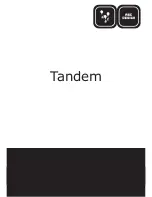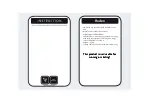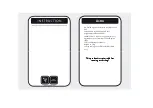
A H 5 0 0 M o t i o n C o n t r o l M o d u l e M a n u a l
3.9
Data Registers and Index Registers
General register (D)
D0~D9999 (10,000 data registers)
Index register (V)/(Z)
V0~V5 and Z0~Z7 (14 index registers)
10,014 registers in total
Registers are classified according to character. There are three types of registers.
1. General register:
If the RUN-STOP switch on a module is turned from the STOP
position to the RUN position, or a module is disconnected, the
values in the general registers will become 0. If SM033 in a
module is turned ON, the values in the general registers will be
retained after the RUN-STOP switch on the module is turned from
the RUN position to the STOP position, and will become 0 after the
module is disconnected.
2. Latching register:
If a module is disconnected, the values in the latching registers will
be retained.
If users want to clear the value in a latching register, they can use
the instruction RST or ZRST.
There are no latching registers in AH500 series motion control
modules.
3. Index register (V)/(Z):
V devices are 16-bit registers, and Z devices are 32-bit registers.
There are 6 V devices (V0~V5), and 8 Z devices (Z0~Z7) in an
AH500 series motion control module.
3.9.1
Data Registers
The value in a data register is a 16-bit value. The highest bit in a 16-bit data register represents an
algebraic sign. The value stored in a data register must be in the range of -32,768 to +32,767. Two
16-bit data registers can be combined into one 32-bit data register (D+1, D). The highest bit in a
32-bit data register represents an algebraic sign. The value stored in a 32-bit data register must be
in the range of -2,147,483,648 to +2,147,483,647.
3.9.2
Index Registers
V0
Z 0
16 bits
32 bits
V devices are 16-bit registers. Data can be freely written
into a V device, and data can be freely read from a V
device. If a V device is used as a general register, it can
only be used in a 16-bit instruction.
Z devices are 32-bit registers. If a Z device is used as a
general register, it can only be used in a 32-bit
instruction.
K14
Z1
X0.0
K8
V0
MOV
DMO V
D3@Z1
D4@V0
D0@V0
D2@Z1
MOV
DMO V
If X0.0 is ON, the value in V0 will be 8, and the value in
Z1 will be 14, the value in D8 will be moved to D16, and
the value in D17 will be moved to D12.
If a V device or a Z device is an index register used to
modify an operand, the V device or the Z device can be
used in a 16-bit instruction and a 32-bit instruction.
Index registers are like general operands in that they can be used in movement instructions and
comparison instructions. They can be used to modify word devices (KnM/KnS/T/C/D/SR devices)
and bit devices (X/Y/M/S/SM devices).
3 - 1 2
Summary of Contents for AH500
Page 9: ...viii...
Page 53: ...AH500 Motion Control Module Manual Wiring AH10PM 5A and a Yaskawa servo drive 2 32...
Page 55: ...AH500 Motion Control Module Manual Wiring AH10PM 5A and a Fuji servo drive 2 34...
Page 115: ...AH500 Motion Control Module Manual 4 16 MEMO...
Page 375: ...AH500 Motion Control Module Manual 5 260 MEMO...
Page 383: ...AH500 Motion Control Module Manual 6 8 MEMO...
Page 419: ...AH500 Motion Control Module Manual 7 36 MEMO...
Page 436: ...Chapter 8 Electronic Cam 8 17...
Page 483: ...AH500 Motion Control Module Manual 10 8 MEMO...
Page 505: ...AH500 Motion Control Module Manual 12 8 MEMO...
Page 515: ...AH500 Motion Control Module Manual 13 10 MEMO...
Page 544: ...Appendix A Error Code Table Table of Contents A 1 Error Code Table A 2 A 1...
















































